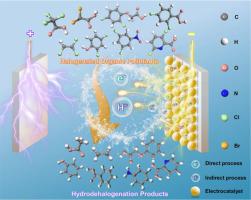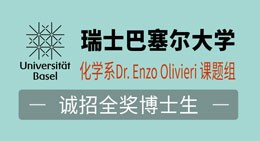Water Research ( IF 11.4 ) Pub Date : 2023-03-01 , DOI: 10.1016/j.watres.2023.119810
Yun Guo 1 , Yang Li 1 , Zhiwei Wang 1

|
Halogenated organic pollutants are often found in wastewater effluent although it has been usually treated by advanced oxidation processes. Atomic hydrogen (H*)-mediated electrocatalytic dehalogenation, with an outperformed performance for breaking the strong carbon-halogen bonds, is of increasing significance for the efficient removal of halogenated organic compounds from water and wastewater. This review consolidates the recent advances in the electrocatalytic hydro-dehalogenation of toxic halogenated organic pollutants from contaminated water. The effect of the molecular structure (e.g., the number and type of halogens, electron-donating or electron-withdrawing groups) on dehalogenation reactivity is firstly predicted, revealing the nucleophilic properties of the existing halogenated organic pollutants. The specific contribution of the direct electron transfer and atomic hydrogen (H*)-mediated indirect electron transfer to dehalogenation efficiency has been established, aiming to better understand the dehalogenation mechanisms. The analyses of entropy and enthalpy illustrate that low pH has a lower energy barrier than that of high pH, facilitating the transformation from proton to H*. Furthermore, the quantitative relationship between dehalogenation efficiency and energy consumption shows an exponential increase of energy consumption for dehalogenation efficiency increasing from 90% to 100%. Lastly, challenges and perspectives are discussed for efficient dehalogenation and practical applications.
中文翻译:

废水中卤化有机污染物的电催化加氢脱卤:评论性综述
尽管废水通常经过高级氧化工艺处理,但在废水中经常发现卤化有机污染物。原子氢 (H*) 介导的电催化脱卤在打破强碳-卤素键方面具有优异的性能,对于从水和废水中有效去除卤代有机化合物具有越来越重要的意义。这篇综述巩固了最近在污染水中有毒卤化有机污染物的电催化加氢脱卤方面取得的进展。分子结构的影响(例如,首次预测了卤素的数量和类型、给电子或吸电子基团)对脱卤反应性的影响,揭示了现有卤代有机污染物的亲核性质。已经确定了直接电子转移和原子氢 (H*) 介导的间接电子转移对脱卤效率的具体贡献,旨在更好地理解脱卤机制。熵和焓分析表明,低 pH 值比高 pH 值具有更低的能垒,促进质子向 H* 的转变。此外,脱卤效率与能耗之间的定量关系表明,脱卤效率从90%增加到100%,能耗呈指数增长。最后,

































 京公网安备 11010802027423号
京公网安备 11010802027423号